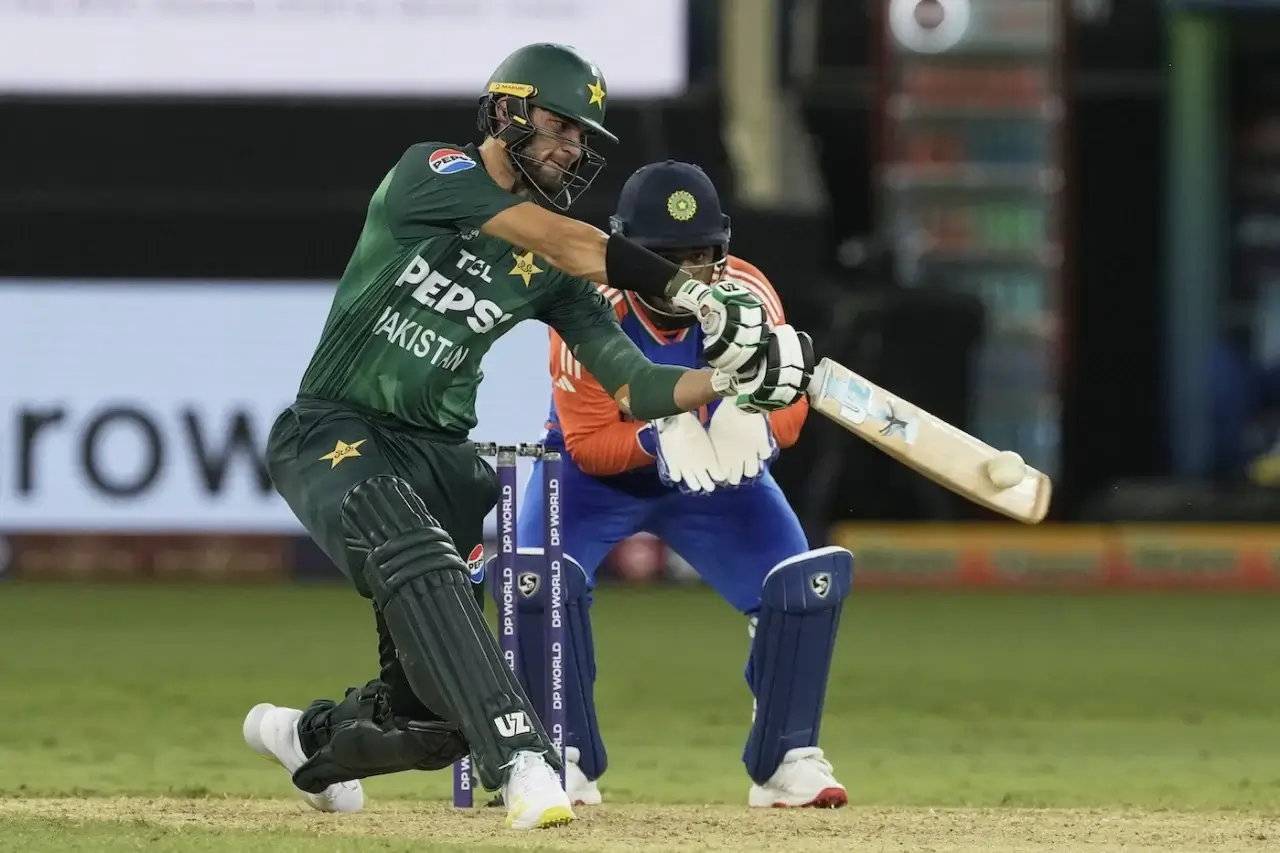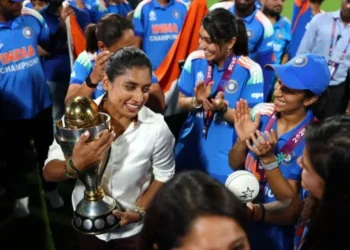Axar Patel took a heavy knock while fielding in Abu Dhabi. He misjudged a skier from Hammad Mirza and dropped a catch. Axar then lost his footing and struck his head on turf. The physio escorted him off and he did not return.
He bowled only one over and conceded four runs for India. India persisted and used eight bowlers to secure a 21-run win. Axar also contributed with the bat, scoring a quick 13-ball 26. He built a 45-run partnership with Sanju Samson for the fourth wicket.
Fielding coach T Dilip said Axar looked fine after the game. But the recovery window is short, with under 48 hours to Dubai. A concussion or persistent symptoms could rule him out of the Pakistan clash. That possibility forces selectors to rethink the planned three-spinner balance, especially against teams like Bangladesh and Sri Lanka.
This article explains the team combinations and likely replacements in detail. It also places the injury inside the ongoing handshake controversy context. We analyse how Oman exposed India’s small vulnerabilities at the crease. Finally, we review medical protocols and how selectors must weigh options.
What does this mean for the Team Combination?
Axar’s potential absence changes India’s balance in clear ways. The team hoped to use a three-spinner mix in Dubai conditions. Without Axar, that three-spinner plan becomes risky and harder to execute. Varun Chakravarthy was rested against Oman and remains an important option.
Kuldeep Yadav is the remaining specialist left-arm spinner in the squad. If Chakravarthy does not play, India may lose variety in spin options. Coaches can compensate by adding an extra seamer for more pace depth. That move, however, reduces the bowling overs available to specialist spinners.
Another path is to bring a spin-bowling all-rounder from the reserves list. Washington Sundar and Riyan Parag are the two practical like-for-like options. Their inclusion would preserve batting depth while maintaining a spin option. But each choice forces subtle changes to the batting order and field plans.
Sundar adds stability with off-spin and patient lower-order batting skills. Parag offers more power hitting and occasional spin, tilting selection trade-offs. Selectors must balance match-ups, workload, and the short recovery timeline. Game plans may shift to protect weaker links and exploit opposition weakness.
The decision will also depend on ground conditions and Pakistan’s likely attack. If Dubai favors seam early, an extra seamer may prove decisive on the day. If spin gets stronger in the middle overs, retaining a spin-bowler becomes crucial. Coaches must choose quickly and aim for minimal disruption to team’s rhythm.
Washington Sundar Likely to Replace Him in Playing XI
Washington Sundar stands out as the most practical short-term replacement. He is already on India’s reserves list and can join quickly. Sundar offers useful off-spin and lower-order batting that balances the side. Given less than 48 hours, logistics favour using a reserve already nearby.
Sundar’s bowling suits the middle overs where control and economy matter most. His batting provides depth and options during tense run-chases. The captain would gain a controlled bowling option for pressure situations. Fielding roles would be adjusted, but the overall team balance stays intact.
Compared to flying in a remote replacement, Sundar is the safe choice. He has prior T20 experience in high-stakes games for India and the IPL. That experience helps him slot in quickly without a heavy learning curve. Selecting him avoids a major reshuffle of the batting order or fielding plan.
Sundar’s inclusion keeps India’s playing XI flexible and tactically sound. It lets the team maintain spin variety without sacrificing batting depth. If picked, he will likely bowl in the 7–13 over window for control. His presence gives the captain an extra option during tight middle overs.
Fitness Timeline and Replacement Logistics
Medical staff will follow strict concussion protocols for head injuries. Even brief symptoms can keep a player out for multiple matches. Axar’s assessment will include on-field checks and hotel monitoring after play. If any red flags appear, doctors will recommend rest and exclusion.
Using an on-hand reserve speeds response and avoids last-minute travel delays. Accreditation, travel time, and match readiness matter with the tight turnaround. Therefore, Sundar becomes the logical option if Axar cannot clear checks. The squad management will aim for minimal disruption ahead of the Pakistan game.
India vs Pakistan and the Controversy — All Unfolding at Asia Cup 2025
The off-field handshake controversy adds noise to an already intense matchup. Match referee Andy Pycroft asked captains not to shake hands at the toss. Pakistan’s board reacted strongly and sought Pycroft’s removal from the tournament. The ICC backed Pycroft and called out Pakistan for protocol breaches later.
Pakistan recorded parts of a closed PMOA meeting, which angered the ICC. The governing body called that action a violation of official meeting rules. This dispute has created headlines that now sit beside fitness concerns. Players from both sides must manage focus amid administrative and media pressure.
For India, the strategy has been to stay calm and focus on cricket. For Pakistan, public protests and board-level actions have amplified stress. The toss moment could become symbolic and draw extra attention from fans. How teams handle the off-field attention will influence on-field temperament.
This controversy can either fuel motivation or serve as a distracting burden. India’s leadership must shield players and keep the preparation process-driven and simple. A single clear message in the dressing room can blunt surrounding noise. Staying process-focused will give any team the best chance to perform under stress.
How Oman Exposed Weaknesses with Accurate Line and Lengths?
Oman bowled disciplined lines and forced India into risky shot selection. Their bowlers stuck to plan and tested patience in the middle overs. India lost eight wickets but still posted a competitive 188 for 8 total. Tight bowling made India rotate strike and play more aggressive strokes. Arshdeep took 100 wickets in 64 matches to be the first Indian to have 100 wickets in T20Is, as he did for the Punjab Kings in IPL.
The fielding lapse that led to Axar’s head knock was costly in context. That moment highlighted small lapses under fatigue and pressure conditions. Opponents who bowl precise lines can exploit India’s middle-order tempo gaps. When disciplined bowling meets smart field setting, India can look vulnerable.
India countered by using eight bowlers and flexible bowling rotations that night. That adaptability helped them clinch a 21-run win despite obvious concerns. But Oman proved a focused plan can unsettle even top-ranked batting units. Teams like Pakistan can study that game to set similar lines and angles.
To fix this, India must tighten shot selection and build longer partnerships. The middle order needs a steadier temperament against probing spin and seam combos. Fielding intensity and catching discipline must improve to avoid repeat injuries. Oman offered a small blueprint for how lesser teams can challenge India.
Medical Protocols and Axar’s Recovery Timeline
Head knocks are treated with high caution under modern concussion rules. Most boards now follow a stepwise return-to-play protocol after head trauma. Initial on-field checks are followed by quiet observation for several hours. If symptoms clear, players undertake graded physical and cognitive tests next.
Any sign of headache, dizziness, or slowed reaction time prompts removal. A single persistent symptom can rule a player out for multiple days. India’s medical team will likely keep Axar off the field until cleared. Even light training is delayed until full neurological checklists return to normal.
With less than 48 hours to a high-pressure match, conservative choices dominate. The team will prefer caution to avoid long-term risks from repeat impacts. If Axar shows any lingering signs, doctors will recommend rest and monitoring. That approach protects the player and removes speculation about rushed returns.
Selectors must prepare for both scenarios: Axar cleared or Axar sidelined. Quick communication from medical staff will determine final squad announcements. The team must also plan for contingencies in case symptoms emerge later. Health must come first, even when tournament pressure pushes for quick returns.
Selectors’ Dilemma and Tactical Options
Selectors face a tough choice between immediate balance and long-term safety. They must weigh the benefit of Axar’s all-around skills against medical advice. Bringing Sundar keeps the balance but removes a frontline left-arm spinner option. Flying a new reinforcement adds variety but risks match readiness and logistics.
Another option is to play an extra seamer to handle early movement in Dubai. That move provides pace depth but could reduce spin control in the middle overs. Choosing Riyan Parag offers firepower lower down and occasional off-spin backup. Parag’s inclusion might be tempting for batting depth, but slightly weakens spin.
Team management must also consider the Pakistan batting lineup and match-ups. If Pakistan favours pace-heavy openers, an extra seamer becomes attractive. If they lean on spin inthe middle overs, retaining a spin-bowling option matters more. Ultimately, selectors must pick the plan that minimises disruption to team rhythm.
Communication with players will be key to ensuring clarity about roles and tasks. A well-explained plan improves execution and reduces on-field confusion during play. The best tactical move is often the simplest one that preserves team balance. In short tournaments, practical and conservative choices usually serve teams best.
Conclusion
Axar Patel’s head injury forces India to rethink balance ahead of Pakistan. Washington Sundar emerges as the most practical and likely immediate replacement. His off-spin and batting depth align well with the team’s tactical needs. Medical checks and concussion rules will ultimately decide Axar’s match availability.
The off-field handshake controversy adds a distracting subplot ahead of the clash. India must shield players and keep the dressing room focused on processes. Oman’s focused bowling displayed how accurate plans can test India’s depth. That match also produced a tense 21-run India win that masked deeper questions.
Selectors now face a classic tournament dilemma, balancing safety and tactical needs. Quick, clear decisions and calm leadership will matter more than headline drama. From an SEO and publishing view, update this piece once medical reports arrive. Add a match-day update and FAQ to capture search intent and lift rankings quickly.
















